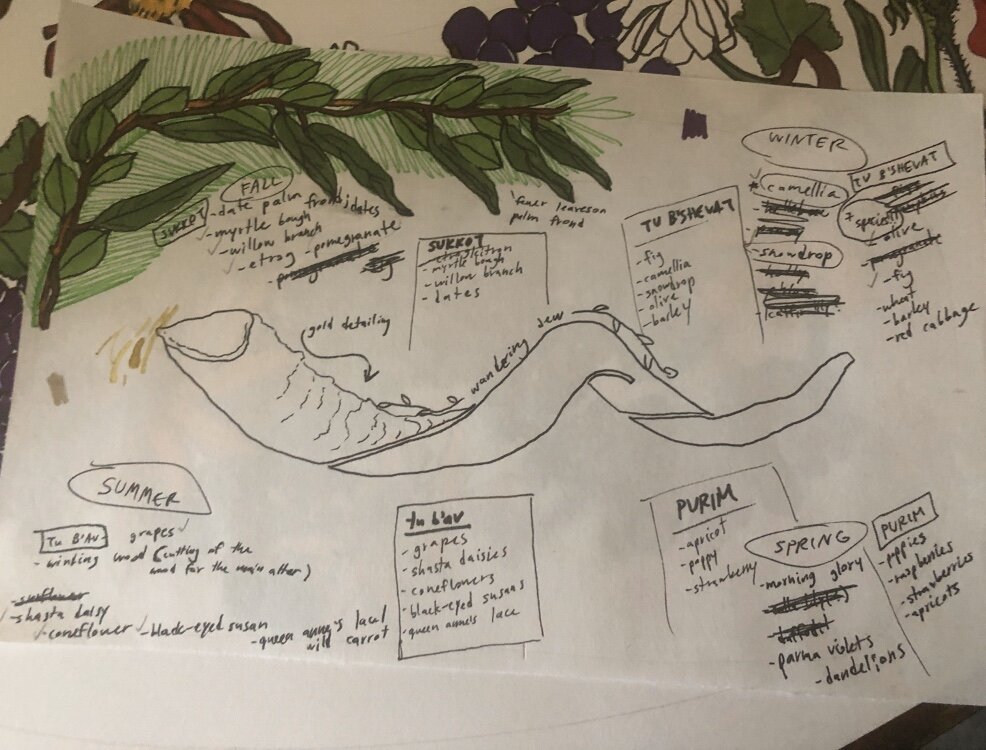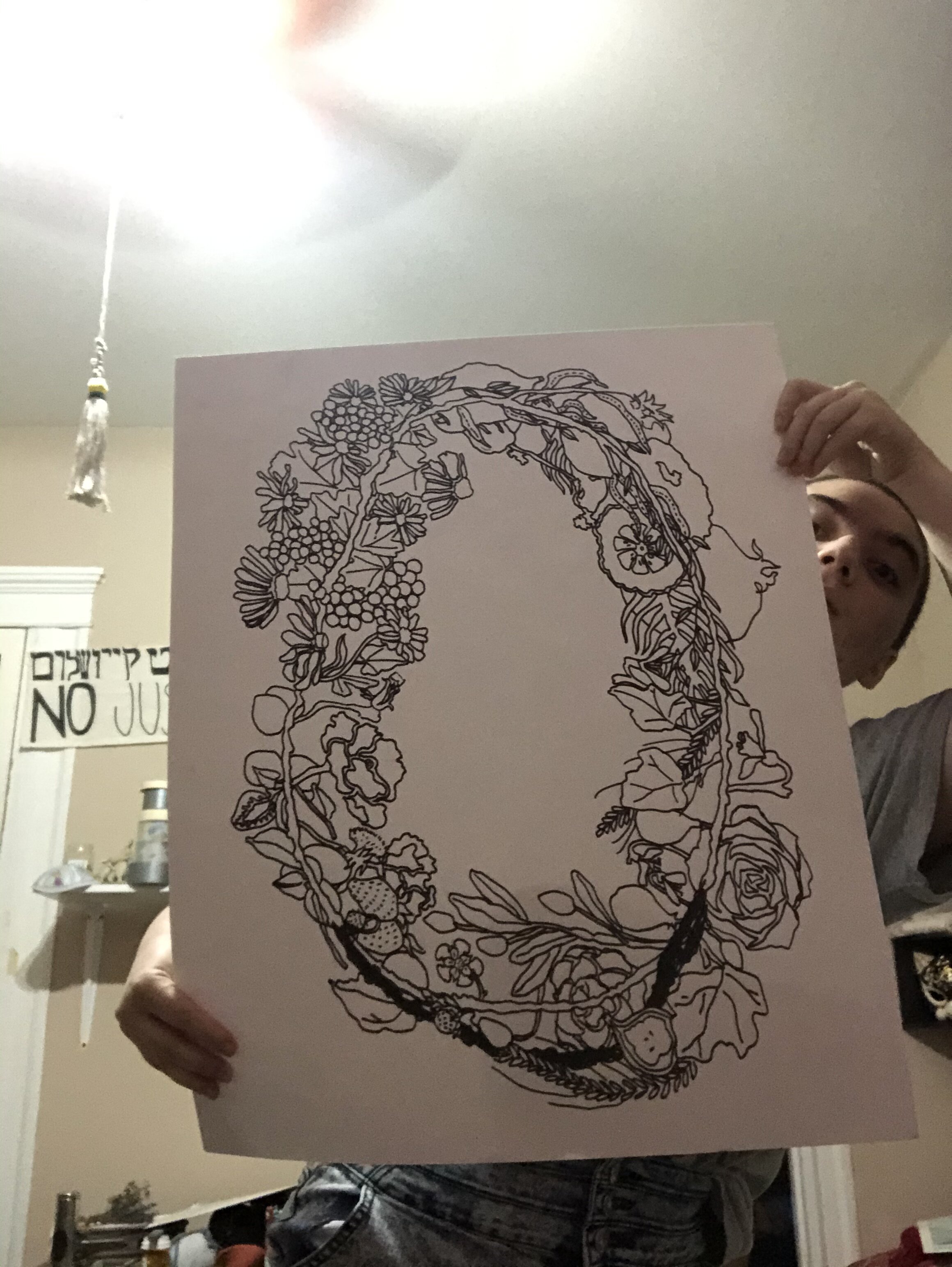Hinenu’s theme for this coming year is Z’man, sacred time, and we wanted the Siddur to reflect the passing of time in a way that is both definitively Jewish and connects us to the outside world in this period when it is so easy to feel isolated.
On June 12 at 10:16 AM Rabbi Ariana texted me, “I have a scheme!”
By 11 we were on the phone planning this art piece, and I used stitches to mark the passing of time from the day we began until I handed it to her 49 days later.
I began by drafting a little crib sheet for what plants would go where, then mapping them out onto paper in full color for RAK to sign off on. The initial concept had a shofar in the center which we later scrapped for a spot illustration to prioritize text.
After hand-drawing the image, I used a light box to trace the lineart onto another piece of paper and then transfer it onto cotton muslin (kindly donated by Hinenu member Erin Kelly)! At this stage I not only removed the central motif but also did some balancing of the composition and rounded out the wreath to be more symmetrical.

The border for this piece is designed to be one continuous branching form around the outside, made out of four different types of wood to mark the changing seasons in a Hebrew calendar year: In the top left, fall, it’s a willow branch. In winter it turns into a fig branch, in spring an apricot branch and in summer a grape vine. This symbolizes the holidays I chose to represent each season’s bounty.
Fall is represented by Sukkot so it has a date palm frond and loose dates, myrtle bough, willow branch, etrog, and pomegranates.
Winter is Tu B’Shevat so I added some of the remaining seven species- fig, olive, and barley, as well as the winter-blooming flowers Camellia Japonica and snowdrop.
Spring is Purim so I focused on hamantaschen fillers! Apricot, poppy, wild strawberry, and some dandelions which symbolize long lasting happiness and surviving through all challenges.
Tu B’av for summer: The grape vines are front and center, then a spattering of shasta daisies, coneflowers and finally black-eyed susans, the Maryland state flower, to symbolize Doykeit (the diasporic concept of “hereness”), which is especially important when seeking place in our community without the physical grounding of in-person services this year.
If this art brings you comfort and joy, consider bidding for a chance to take home the finished piece as a wall hanging or table runner! The proceeds from the auction will be split between Hinenu’s Mobilization and Justice Committee and a local bail fund.
Thank you for taking the time to read about the floriography and thought process behind my work, and I can’t wait to embark on this Days of Awe journey with you!






